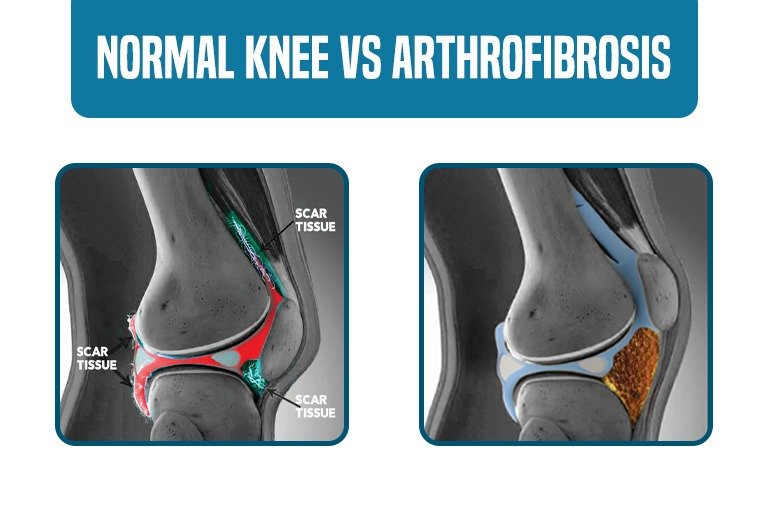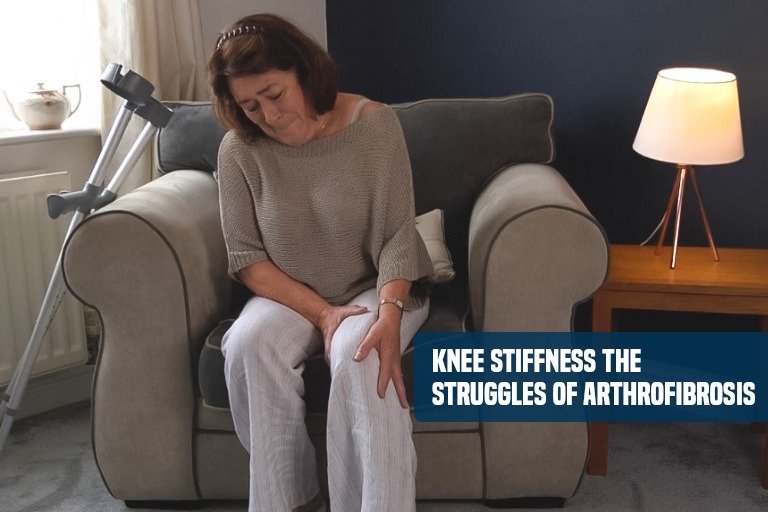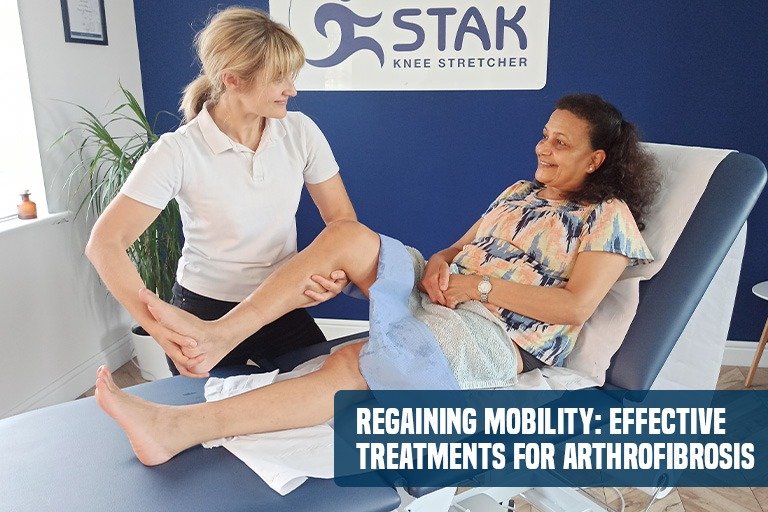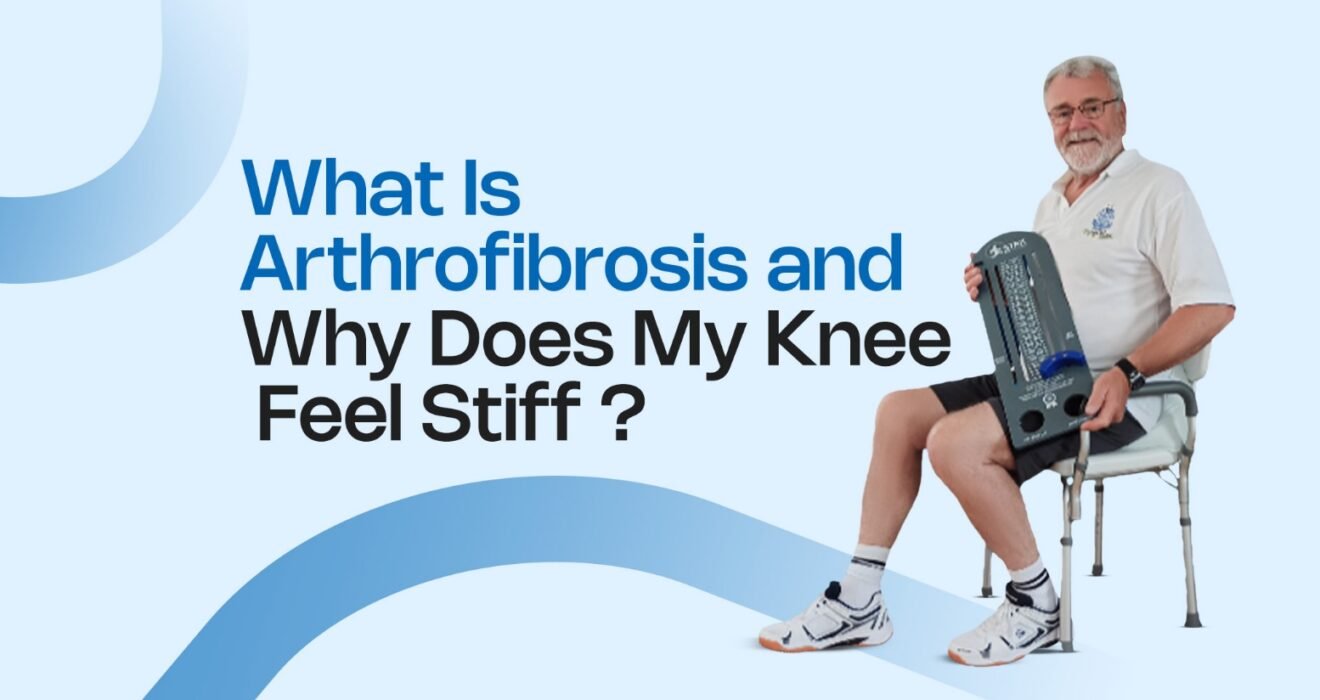What Is Arthrofibrosis and Why Does My Knee Feel Stiff ?
What is Arthrofibrosis and How to Manage It. If you’ve recently undergone knee surgery, you may have experienced knee stiffness and wondered why your knee feels tight or difficult to move. One potential cause of this stiffness is arthrofibrosis, a condition that affects many knee surgery patients. This article explains what arthrofibrosis is, how it develops, and what you can do to manage it effectively.

What Is Arthrofibrosis?
Arthrofibrosis is the abnormal buildup of scar tissue inside the knee joint after surgery or injury, causing the knee to become stiff and limiting its range of motion (ROM). This condition is common in individuals recovering from knee surgeries such as knee replacements, ACL repairs, or meniscal surgeries. Studies show that up to 20% of knee surgery patients develop this condition.
The buildup of scar tissue impedes normal knee movement, making everyday activities like walking, sitting, and climbing stairs difficult. In some cases, the scar tissue can be so extensive that it severely restricts knee function, leaving the patient with limited mobility.
Why Does Arthrofibrosis Happen?
Arthrofibrosis occurs when there is an overproduction of collagen, the body’s natural response to injury. After surgery, your body forms scar tissue to heal the injured area. However, if this process goes awry, excess collagen builds up inside the joint, leading to stiffness and pain as the scar tissue interferes with the knee’s ability to bend and straighten.
Additionally, inflammation after surgery can exacerbate the condition, leading to even more scar tissue formation. If not properly managed, this excess tissue can cause long-term mobility issues.

Symptoms of Arthrofibrosis
The most common symptom of arthrofibrosis is knee stiffness. You may experience:
- Limited Range of Motion: Difficulty bending or straightening the knee fully.
- Pain: Especially when trying to extend the knee or during weight-bearing activities.
- Swelling: Persistent swelling even after the initial recovery period.
- Discomfort While Walking: Walking may feel awkward or painful, and you may find it hard to move around without assistance.
If you’re experiencing these symptoms after knee surgery, it’s important to consult your healthcare provider. They can assess the extent of your condition and recommend appropriate treatment options.
How Arthrofibrosis Affects Knee Mobility
Arthrofibrosis can significantly hinder your mobility. When the knee joint is restricted by scar tissue, basic movements like walking, sitting, or climbing stairs become challenging. If left untreated, arthrofibrosis can cause muscle atrophy due to lack of use, further reducing strength and function in the knee.
Achieving at least 110–120° of knee flexion is essential for regaining normal knee function and performing daily activities. Without this range of motion, activities like walking, driving, or even getting in and out of a car can be extremely difficult.

Treatment Options for Arthrofibrosis
Managing arthrofibrosis effectively requires a combination of therapies. Here are the most common treatments:
1. Physio Therapy
physiotherapist plays a central role in treating arthrofibrosis. Through specific exercises, physical therapists help patients regain their knee’s flexibility and strength. Knee flexion exercises are essential to help the joint bend and straighten fully, while strengthening exercises build muscle around the knee to support the joint.
2. High-Intensity Stretching (STAK Knee Stretcher)
A treatment option that has gained traction in recent years is high-intensity stretching with devices like the STAK Knee Stretcher. This tool helps patients perform controlled stretching at home, which can speed up recovery by breaking down scar tissue more effectively than traditional physiotherapy alone . By applying gentle, sustained pressure to the knee joint, the STAK tool encourages the formation of healthier tissue and improves mobility.
3. Surgical Intervention
If physiotherapist and home devices like the STAK tool are not effective, surgical intervention may be necessary. In extreme cases, doctors may recommend arthroscopic surgery to remove the excess scar tissue from the knee joint. This procedure is typically considered a last resort after non-invasive treatments have been exhausted.
4. Medications
Steroid injections can help reduce inflammation in the knee joint, making it easier to engage in physiotherapist. Nonsteroidal anti-inflammatory drugs (NSAIDs) like ibuprofen can also help reduce pain and swelling, allowing for more comfortable movement during rehabilitation.
How to Prevent Arthrofibrosis
While you can’t always prevent arthrofibrosis, there are steps you can take to reduce the risk:
- Follow your rehabilitation plan: Stick to your physical therapy exercises and make sure you follow the plan set by your healthcare provider.
- Avoid overloading the knee: Don’t push through severe pain or overexert the knee during the early stages of recovery.
- Start stretching early: Begin gentle stretching exercises as soon as your doctor gives you the go-ahead. Early intervention can help prevent the development of scar tissue.
Final Thoughts
Arthrofibrosis is a common condition following knee surgery that can severely limit your knee’s range of motion. However, with proper treatment and physical therapy, most patients can regain mobility and improve their quality of life. Using tools like the STAK Knee Stretcher and following a structured rehabilitation program can help you break down scar tissue and restore your knee’s function. If you’re experiencing knee stiffness after surgery, don’t hesitate to consult your healthcare provider for personalized treatment recommendations.


